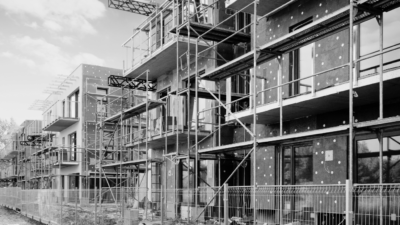Residential rents in prime central London locations rose by 1.1 per cent in the year to September 2018 due to a fall in supply, according to new research from Knight Frank.
Knight Frank also saw a significant six per cent increase in their new agreed tenancies in the area, with two key issues cited as contributors here.
The first factor is the growing uncertainty over the Brexit negotiations, which is thought to have resulted in many renters delaying their plans to purchase in preference for the stability of renting for the time being.
The second factor under consideration is the growing number of investors who have sold their properties as a result of the recent government tax changes to buy-to-let investments. This has created a drop in supply, thereby putting increased pressure on rental value for the remaining rental properties available on the market in prime central London.
As Knight Frank put it in their Autumn 2018 London Residential Review: “A succession of tax changes for landlords that continue to 2020 means an increasing number have either sold or listed their property for sale. This, in turn, has resulted in a decline in supply and put upwards pressure on rental values.”
The report goes on to quote new data released from online property portal Rightmove stating that there has been a seven per cent decrease in the total number of new rental listings in prime central London in the year to September 2018 compared to the 12-month run-up to September 2017. By comparison, a 10 per cent decrease in new rental listings was seen in outer London over the same time period.
Prime central London vs outer London rental prices
So what about the rental prices? While those in the prime central London area witnessed the headline 1.1 per cent increase, Knight Frank found that outer London property did not fare so well with a minor drop in rental values of 1 per cent recorded over the same 12-month period.
The decline is admittedly modest and in fact signals the most modest rate of decline in rental value over the past two-and-a-half years.
But while the decline in rental value has decreased in pace there is still market trepidation, especially in the run up to the tenant fees ban which is due to come into legislation in early 2019 and has the potential to impact on profits depending on how agents approach administrative costs.
Will new-build plans open up new property investment hotspots?
The report on rents comes amid news that over 53 per cent of London’s new residential buildings in the pipeline are located in the East and the South East of the capital. The news, as revealed by Kinleigh Folkard & Hayward (KFH), is expected to open up future property investment hotspots.
East London’s new build pipeline takes up a massive 31 per cent of the overall total residential property units planned in London. Meanwhile, the South East is set to account for 22 per cent of the capital’s new build pipeline with 60,623 units planned for construction.
The KFH research also revealed that the total number of residential units delivered across Greater London as a whole in the year to Q1 2018 was nearly a third higher than the previous 12-month period. South East London saw a 15 per cent increase equating to 7,770 new residential units, while the 2,070 new residential units in Central London represented a massive 200 per cent increase on the previous year.
With more residential housing available, landlords and investors are keeping a close eye on what’s on offer. Future property hotspots in South East and East London look set to attract more attention, particularly considering the funding from local government into transport links, infrastructure, development and job opportunities in Canary Wharf as well as the regeneration from the London 2012 Olympics.
Although East London has provided plenty of opportunity for property developers with the sale of cheaper land to build more residential housing units, there is still the challenge of creating and sustaining local smaller scale urban communities which are cast in the shadow of these larger property developments.
Amid all the noise and uncertainty around Brexit, it’s worth noting that it’s not all doom and gloom for the capital’s property market. London’s prime central locations have enjoyed a rise in rental value this year and where there was a reduction in the rental value in outer London, landlords can take some relief in the fact that this is the most moderate reduction that has been seen in the past two-and-a-half years.
With the future stock now lined up in the South East and East London, the capital remains one to watch.
























Comments